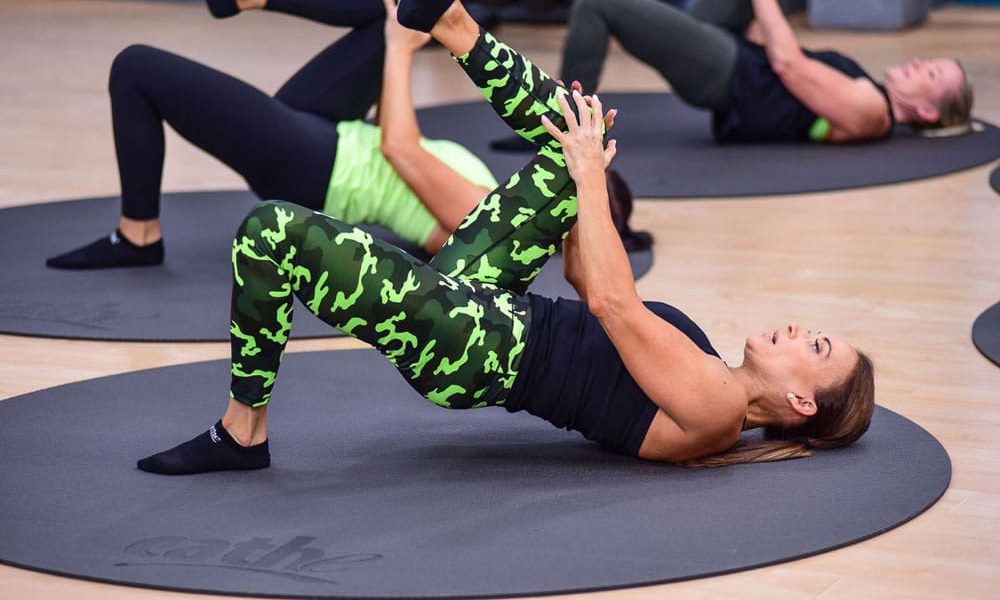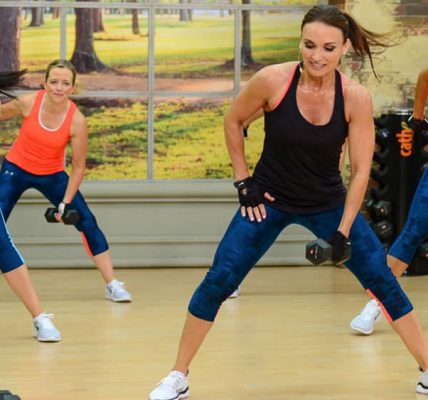If you’re breaking a sweat in your living room, pushing your limits, and feeling the burn, then you know how important it is to take care of your body and how effective exercise is for doing that. You also know that your body needs a break from high-intensity exercise. That’s where recovery days come in, the unsung heroes of a fitness journey. They’re like pit stops for your body’s high-performance engine.
But recovery days aren’t all the same. They come in two flavors – rest and active recovery. In this article, we’ll explore the importance recovery plays in optimizing your fitness and explain the difference between the two types of recovery: rest and active.
Rest Day vs. Active Recovery Day: How They Differ
A rest day isn’t just about binge-watching your favorite series (although that’s a bonus). It’s about giving your muscles, joints, and mind an uninterrupted siesta and taking it easy.
Meanwhile, an active recovery day is like a delightful stroll through the park after a busy workweek. You’re moving, but not sprinting. It’s a low-key day that could involve yoga, a leisurely bike ride, or a refreshing swim.
On these days, you’re not pushing yourself to the brink. Yet you’re keeping the energy flowing and the muscles gently moving. It’s like letting your body enjoy a slow, rejuvenating dance party – a little wiggle, a little groove, and a lot of happiness.
Why You Need Rest and Active Recovery Days
Don’t underestimate the importance of recovery. You wouldn’t drive your car for hours without stopping to refuel, right? Well, your body’s no different. Both rest and active recovery days are like gas station breaks – they’re not just optional, they’re essential. They’re the secret sauce that helps you avoid burnout and keeps your body from feeling like an overstretched rubber band. Plus, during rest and recovery days your muscles repair and rebuild to become a stronger version of themselves.
Then, there’s the injury factor. Regular recovery, whether rest or active recovery, helps prevent injuries that can toss a wrench into your fitness plans, letting you stay in the game for the long haul. When you’re tired, your form suffers and you’re more likely to strain a muscle or worse.
Recovery days are the charger – they refuel your energy reserves, leaving you raring to conquer future high-intensity workouts like a boss. Taking a rest day isn’t lazy. You have to strike a balance between pushing your limits and giving your body the restoration time, it craves.
Should You Rest or Take an Active Recovery Day?
Rest days and active recovery days are both beneficial but they differ. On a rest day, you can use the time to watch your favorite movies without a thought as to how much you’re moving around. You might stretch a little or do a slow yoga workout, but the focus is on relaxing and getting as rested as possible.
But on an active recovery day, you’re more laid-back but still moving, but not at a pace that leaves you huffing or puffing. For example, you might take a casual bike road, do a light stretching workout, swim, or walk outdoors. These activities are at a pace that feels like playtime rather than hardcore training.
Which will work best for you? Pay attention to how your body feels. If you’re wiped out and your muscles are protesting, a full rest day might be the way to go. But if you’re just slightly achy or restless, an active recovery day could serve you better. Tune into your energy levels and any lingering soreness – they’re your best guides.
For example, if you’re experiencing a decline in your performance or feeling demotivated and mentally fatigued, your body is telling you that you need a break. Whether you take a rest day, or an active recovery day depends on how intense your symptoms are. If your muscles are aching and your mind needs a break too, a rest day may be on the agenda.
Also, take a closer look at your sleep schedule and nutrition habits. Lack of sleep and skimping on calories can both cause performance declines and mood changes. Ensure you’re consuming enough calories, eating the right foods, and hydrating.
Adjust Your Recovery Based on Your Training Goals
You can adapt an active recovery day to your fitness goals. Imagine your fitness routine as a menu with different options – strength, endurance, flexibility. If you’re focused on endurance training, think about easy-paced jogging or a light bike ride on an active recovery day. If you’re mainly focusing on weights and strength building, a yoga workout would fit into an active recovery day or if you opt for a rest day, light unstructured stretching might be all you do. And if flexibility is your aim, adding yoga or Pilates to your active recovery days can work wonders.
Remember, it’s about finding what suits you best. Just like you’d tailor a shirt to fit perfectly, adjust your recovery or rest days to your goals and how your body feels. Whether you’re aiming to get stronger or increase your endurance, recovery days are your secret weapon to make the journey smoother, more enjoyable, and ultimately successful.
Conclusion
Keep this in mind. Weaving recovery days into your routine isn’t a weakness; it’s a smart strategy. Whether you’re a newbie or a seasoned pro, planned rest and gentle movement are your secret weapons for reaching your fitness goals.
So, as you move forward, know that every moment of rest, every intentional recovery choice, is a step closer to a stronger, healthier you. Keep these lessons close and let the power of recovery guide you toward fitness success. Onward to a brighter, fitter future! Make sure rest and recovery are part of your training strategy.
References:
- Mika A, Oleksy Ł, Kielnar R, Wodka-Natkaniec E, Twardowska M, Kamiński K, Małek Z. Comparison of Two Different Modes of Active Recovery on Muscles Performance after Fatiguing Exercise in Mountain Canoeist and Football Players. PLoS One. 2016 Oct 5;11(10):e0164216. doi: 10.1371/journal.pone.0164216. PMID: 27706260; PMCID: PMC5051742.
- Rx Sports Recovery. Rx Sports Recovery. Published April 6, 2018. Accessed August 4, 2023. https://www.rxsportsrecovery.com/journal/2017/12/22/how-do-chronic-injuries-occur-and-how-do-you-prevent-them
- Br J Sports Med doi:10.1136/bjsports-2015-094758.
- Journal of Exercise Physiology. “The Overtraining Syndrome: A Meta-Analytic Review” April 2013.
Related Articles By Cathe:
The Benefits of Active Recovery After Exercise
5 Factors That Impact How Much Recovery Time You Need Between Strength-Training Workouts
Can Active Rest Between Sets Help You Build More Muscle?
Why Recovery Days Are Important for Getting Fitter
Can Active Recovery Between Strength-Training Sets Boost Your Fitness Gains?
Cathe Friedrich Related Workouts:
STS 2.0 Active Recovery & Total Body Stretch









